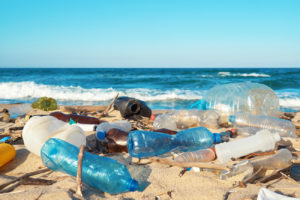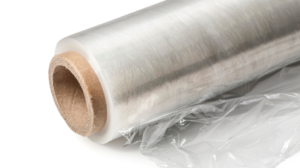Canadian companies tackle plastic packaging waste by supporting Golden Design Rules
Voluntary, Independent, and Time-Bound Commitments That Outline Specific Design Changes Aligned With Globally Recognized Technical Guidelines
Twenty-one Canadian retail and consumer packaged goods companies are taking leadership by supporting the Golden Design Rules for Plastic Packaging released last week by the Consumer Goods Forum (CGF) Coalition of Action on Plastic Waste. The nine Golden Design Rules provide a clear framework that aims to drive innovation and scalable actions that will result in less plastic packaging overall and easier to recycle plastic packaging by 2025. In Canada, the consultation and implementation of the Golden Design Rules nationally is being led by the Canada Plastics Pact (CPP).
In Canada, most plastics currently end up in landfill or in the environment, because of many complex factors – and Canadians know we can do better. Citizens have been asking for companies to reduce plastic waste and move towards a circular economy in which nothing is wasted. The Golden Design Rules are one important response by changing how packaging is designed in the first place. The Golden Design Rules advance bold systemic change that aims to eliminate plastic packaging waste by keeping it in the economy and out of the environment.
“The Golden Design Rules offer solid structure and guidance that have the potential to positively influence how plastic packaging is designed and recirculated back into a circular economy for plastics. By adopting these standards, brand owners of retail and consumer packaged goods leverage their influential position in the value chain to realign markets by designing out waste,” says Jo-Anne St. Godard, Executive Director, Circular Innovation Council.
The Golden Design Rules are voluntary, independent and time-bound commitments that outline specific design changes, aligned with globally recognized technical guidelines. Companies are each independently choosing to commit to individual rules based on which are most relevant to their packaging portfolios.
“Currently, the recycling system is challenged by the large diversity of plastic packaging types and shapes in the recycling stream,” says George Roter, Managing Director of the Canada Plastics Pact. “Companies supporting and committing to the Golden Design Rules will help to catalyze positive systems-wide change for improved recyclability.”
The objectives of the Golden Design Rules are to eliminate unnecessary or challenging-to-recycle packaging, increase the recycling value for both packaging that is currently recycled at scale as well as packaging types that will be recycled at scale in the future, improve environmental performance of business-to-business packaging and improve consumer communications. The newly released rules include reducing the use of plastic overwraps like those used in multipacks, eliminating air space in flexible plastic packaging like snack bags, and improving recyclability by using single-material plastics.
The Canada Plastics Pact is engaging companies, experts and stakeholders across the plastics value chain to develop a set of voluntary guidelines that are aligned with the Golden Design Rules globally and tailored to Canada. In addition, the CPP and Partners will collaboratively develop a framework for companies to independently determine whether to commit to the Golden Design Rules, provide guidance, support, learning materials, and programming for implementing them, and create reporting mechanisms to track progress.
“By committing to and engaging with the Golden Design Rules, companies are saying ‘we want to be part of the solution’ and demonstrating that they are ready for change through concrete actions like eliminating excess headspace in packaging or changing to a different type of plastic that is easier to recycle,” says Roter. “By driving this process through the CPP we gain the additional benefit of aligning players across the plastics value chain in the implementation of the Golden Design Rules allowing brands and retailers to act in the context of the broader system.”
Golden Design Rules
Increase Value in PET Recycling
- Use transparent and uncoloured PET (preferred), or transparent blue or green in all PET bottles
- Ensure material choice, adhesive choice and size of sleeve or label is not problematic for recycling
Remove Problematic Elements from Packaging
- No undetectable carbon black
- No PVC or PVDC
- No EPS or PS2
- No PETG in rigid plastic packaging
- No oxo-degradable
Eliminate Excess Headspace
- Eliminate excess headspace for all flexible pack types, such that the maximum headspace is 30% or less across the product categories outlined in the rule.
Reduce Plastic Overwraps
- Reduce plastic overwraps by only using them when “necessary” (as defined by the developed guideline)
- Increase Recycling Value for PET Thermoformed Trays and Other PET Thermoformed Packaging
- Regional design guidelines to fit with existing recycling programs shall be met wherever possible.
- For packaging that is not accepted by existing recycling programmes, and where there is a clear pathway for a future recycling system by 2025, the following requirements apply:
- Use transparent and uncoloured (preferred), or transparent blue or green PET
- Ensure material choice, adhesive choice, inks and size of sleeve or label is not problematic for recycling
- Use only mono-material PET
- Use minimal or moderate direct printing
- Ensure material choice and adhesive choice of lidding films, inserts or other components is not problematic for recycling
Increase Recycling Value in Flexible Consumer Packaging
- Regional design guidelines to fit with existing recycling programmes shall be met wherever possible.
- For packaging that is not accepted by existing recycling programs, and where there is a clear pathway for a future recycling system by 2025, the following requirements apply:
- Maximise polyolefin content:
- Preferably >90% mono PE, or >90% mono PP
- Minimum either >80% mono PE, >80% mono PP or >80% mixed polyolefins
- Density <1 g/cm3
- Each barrier layer should not exceed 5% of the total packaging structure weight
- No PVC, PVDC, fibres, aluminium foil, PET
Increase Recycling Value in Rigid HDPE and PP
- For all rigid HDPE and PP packaging:
- For all labels, ensure material choice, adhesive choice, inks and size is not problematic for recycling
- Use minimal or moderate direct printing
- For closures, ensure material choice, liners and seals are not problematic for recycling
- Do not use fillers that increase the density of the packaging to >1g/cm3
Reduce Virgin Plastic Use in Business-to-Business Plastic Packaging
- Reduce the use of virgin plastic in business-business (B2B) plastic packaging in a way that is environmentally beneficial by:
- Eliminating unnecessary plastic (defined as unnecessary if it can be removed without compromising supply chain/operational efficiencies)
- Using post-consumer recycled content (where plastic is necessary)
- Switching to reuse models or alternative materials
Use On-Pack Recycling Instructions
- Include recycling or reuse instructions on consumer plastic packaging.
Golden Design Rules in Full (PDF)
The Golden Design Rules were developed collaboratively at the global level with industry experts and the 42 companies of the CGF’s Coalition of Action on Plastic Waste, co-sponsored by Galen Weston, Executive Chairman and President of Loblaw, and Alan Jope, CEO of Unilever. This latest announcement of the final seven Golden Design Rules follows the release of the first two rules in December 2020, all guided by the vision of the Ellen MacArthur Foundation’s New Plastics Economy initiative for a circular economy.
The Canadian companies who are already in support of or committing to the Golden Design Rules based on their packaging portfolios include: Amcor, Canadian Tire, The Coca-Cola Company, Colgate Palmolive, Henkel Canada Corporation, HypoIndustries Ltd, Ice River Sustainable Solutions, Johnson & Johnson Inc., Kraft Heinz Canada, Loblaw Companies Limited, Mars Canada, McCain Foods, Metro Inc., Mondelēz Canada, Nestle Canada, PepsiCo Canada, P&G Canada, Save-On-Foods, SC Johnson, Unilever Canada, and Walmart Canada.
In addition, the following organizations that are partners in the Canada Plastics Pact have indicated their support for the Golden Design Rules, and will contribute to their implementation through the CPP: Alberta Beverage Container Recycling Corporation, Canadian Beverage Container Recycling Association, Canadian Bottled Water Associations, Canadian Produce Marketing Association, Circular Innovation Council, City of Edmonton, GS1 Canada, The National Zero Waste Council, PAC Packaging Consortium, Recycling Council of Alberta, Retail Council of Canada, and Return-It.



